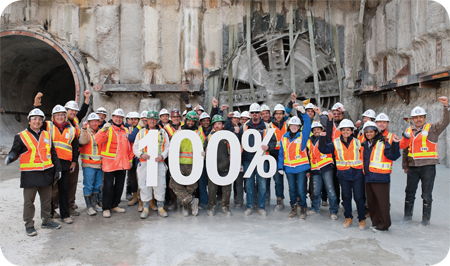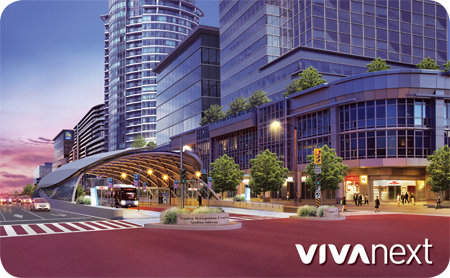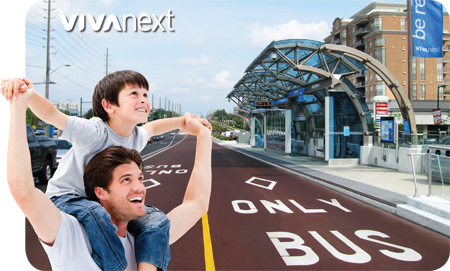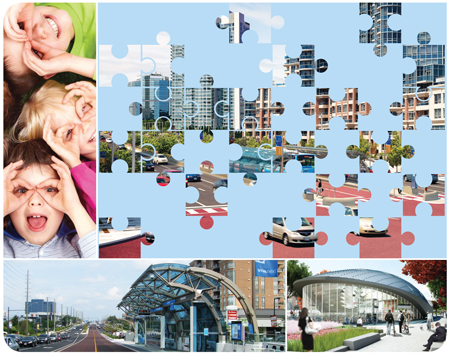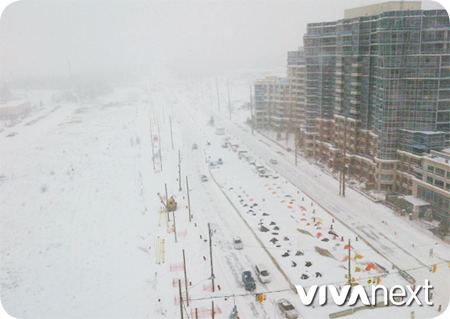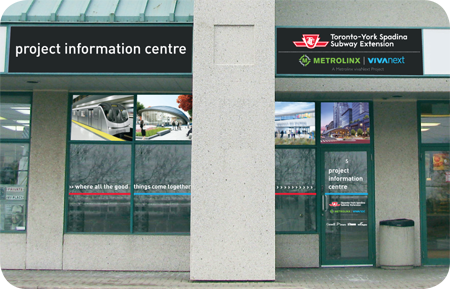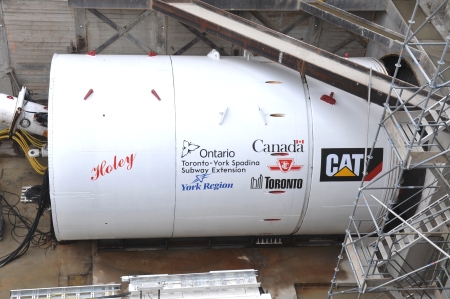Seems like just yesterday vivaNext was ramping up construction activities at the first sign of warmer temperatures and while the warmer weather was here this year, a lot of progress was made along the vivaNext corridors. We captured our developments and put together a short video to share the progress of the transformation for each corridor.
Building on our successes, we will keep the progress moving even as we wind down for the return of Old Man Winter. Although the weather specialists forecast a cold winter season, our vivaNext construction projects will continue as the snow flies and the cold wind blows. Here’s a snapshot of what we’re going to be working on this winter along the vivaNext corridors and how we’ll manage to keep construction moving along even when the temperatures plunge.
In Newmarket, crews will continue storm sewer installation, utility relocations and underground ductbank [gathers together and encases telecommunication wires] installation along Davis Drive. The south side of western creek culvert near Niagara Street will be also be widened over the next several months.
In Markham, utility relocations will continue on South Town Centre Boulevard, Cedarland Drive and Warden Avenue. Some construction work will also continue on Highway 7 East in the centre median.
Along the Vaughan Metropolitan Centre [VMC] corridor, hydro, gas and telecommunications installations and relocations will continue. Work will also begin on the CN Bridge. Preliminary construction activity also continues in Vaughan along Highway 7 West from Helen Street to Edgeley Boulevard and from east of Bowes Road to Yonge Street, including parts of Bathurst Street and Centre Street.
On Yonge Street, surveying, geotechnical testing and utility locates will take place in Richmond Hill and Newmarket. In early 2014, the design-build contract of the Yonge Street rapidway will be awarded. Once the contract is awarded, rapidway construction will begin.
While construction continues outside, inside our contractors are preparing for a busy spring. They are finalizing designs, plans and schedules for next year so when the warm weather returns construction crews can hit the ground running.
To see the progress we’re making over the winter, follow us on Twitter and Facebook. You can also sign up for email notices at vivanext.com to keep you updated on the construction underway in your area.


